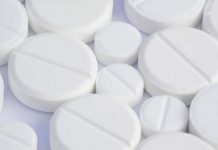Binder is an important excipient in tablet manufacturing. Crystalline form of substances can be directly compressed into tablet, but majority of drugs will have to be converted to granules before compression. Binders or adhesives are used during granulation to provide cohesiveness to the powdered substances and keep the tablet intact after compression.
Mechanism of binding: When slurry in suspension or solution form is added in mixture of powders, there is formation of liquid bridges and adsorption bonds between the particles and tensile of their bond increased (intergranular bonds). Surface tension forces and capillary pressure play crucial role in granule strength and formation. After the addition of binding agents adsorption bonds become active between particles surfaces in whole mixture which are
- Binder-binder
- Substrate-substrate
- Binder-substrate
In some formulations binders are used in dry form and in others they are used as liquids by making a solution or suspension in suitable solvent like water, alcohol or mixture of these two. The proportion of binding agent varies from formulation to formulation. Tablets which are required to keep intact for a long time like lozenges and implants need high percentage of binders and which are to be disintegrate immediately need low quantity of binders for example effervescent tablets.
Two types of binders are used in granulation
- Natural binders: Starch paste, acacia, tragacanth, alginic acid, cellulose, gelatin
- Synthetic or semi-synthetic binders: Methyl cellulose, ethyl cellulose, hydroxy propyl methyl cellulose, polyvinyl pyrollidine, polyvinyl alcohols, ploymethacrylates.
- Sugars: Sucrose, liquid glucose
Natural gums such as tragacanth and acacia are much effective when they are added in solution form. Synthetic polymers like PVP is used in alcohol gives granules which requires very less drying time and have good compressibility. It is used for granulation of moisture sensitive chewable and effervescent tablets.
Starch is used as binding agent in the form of paste in wet granulation. For preparation of paste, heat is used. During heat there is partial hydrolysis to dextrin and to glucose. This paste makes cohesive tablets which disintegrate readily.
Recomended Binder concentration:
| S.no | Binder | Recommended percentage |
| 1. | Acacia gum with water or hydro alcohol | 2 to 5 % |
| 2. | Gum Tragacanth with water | 1 to 3% |
| 3. | Gelatin with water | 1 to 4% |
| 4. | Sucrose with water | 2 to 20% |
| 5. | Starch paste in water | 1 to 4% |
| 6. | Sodium alginate with water | 3 to 5% |
| 7. | Methyl cellulose with water | 2 to 6% |
| 8. | Sodium caboxymethyl cellulose with water | 6% |
| 9. | Ethyl cellulose with alcohol | 0.5 to 2% |
| 10. | Hydroxyl propyl methyl cellulose with water, hydroalcohol, methylene chloride | 2 to 5% |
| 11. | Polyvinyl pyrollidine with water, alcohol, hydroalcohol | 0.5 to 5% |
| 12. | Aluminium magnesium silicates with water |
2 to 10% |










